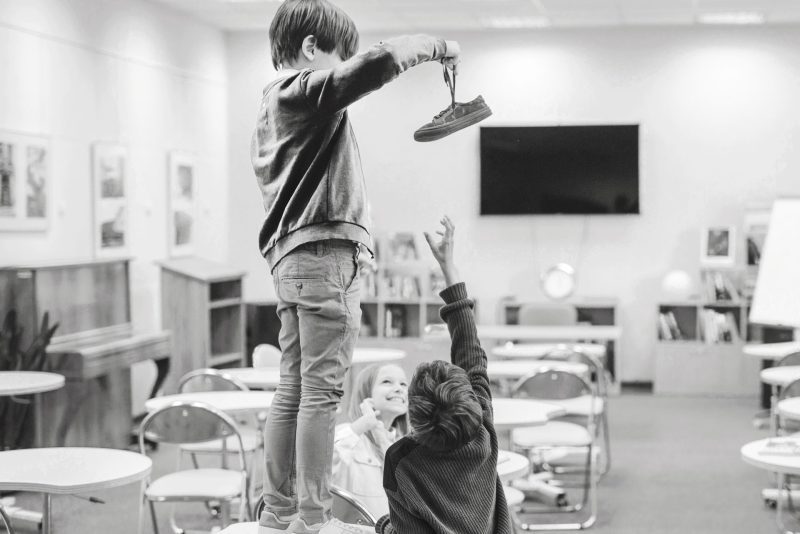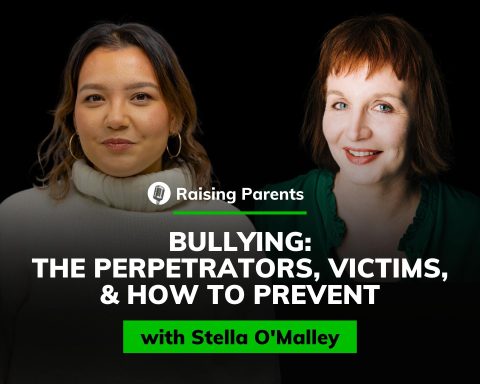Bullying is a serious issue that affects numerous individuals, particularly children. Both the bully and the victim could suffer from the negative impacts of bullying. Hence, it is essential to comprehend the variables that lead to the development of bullying behavior and to implement preventative and corrective measures.
Around 33% of children worldwide are bullied at some point during childhood or adolescence, and a comparable percentage are victims of physical assault. This distressing statistic demonstrates the problem’s pervasiveness and the urgent need to prevent and confront bullying.
What is bullying?
Bullying is defined as long-term, regular, and intentional hostile behavior performed by some children toward their peers who cannot defend themselves properly, which can occur directly or over the internet (i.e., cyberbullying). Bullying can take various forms, including verbal, physical, interpersonal, and cyber.
Read more: Spot the Different Types of Bullies and How to Respond Safely
The causes of bullying
Risk factors refer to specific characteristics or circumstances that can contribute to the likelihood of children displaying bullying behavior. While these risk factors do not necessarily cause bullying, they can increase the chances of it occurring.
Various risk factors, such as the children, family, and school, can collectively increase the likelihood of children engaging in bullying. It’s important to note that these risk factors don’t work in isolation; rather, they interact and increase the chances of bullying behavior. By understanding and addressing these risk factors, one can work towards preventing and reducing bullying behavior in children.
Risk factors in children
A child’s attributes can lead to multiple risk factors that increase their chances of becoming a bully such as:
Low self-control
Children who have low self-control are at a higher risk of engaging in bullying behavior due to difficulty in regulating their thoughts, emotions, and behavior. This non-regulation can lead to impulsive and aggressive actions, making them more prone to perpetrating bullying behavior against their peers.
Low emotional self-efficacy
Children with low emotional self-efficacy — meaning they lack confidence in their ability to regulate negative emotions — may encounter challenges when dealing with personal criticism. They are more likely to become upset easily, exhibit poor emotional stability, and perceive the world as a hostile environment. These factors can increase their likelihood of engaging in bullying behaviors.
Low empathy
Empathy refers to a person’s capability to comprehend (i.e., cognitive empathy) and experience (i.e., affective empathy) another person’s emotions. Bullies either have limited empathy or none at all.
Children that engage in bullying are not always incapable of understanding how others feel, but they appear to have a diminished capacity to experience others’ feelings. In other words, whether or not bullies comprehend how others feel, they do not experience such emotions themselves. It is experiencing others’ emotions, not simply understanding them, that influences children’s predisposition to refrain from bullying.
Risk factors in the family
Children who become bullies tend to come from families with certain characteristics.
These families often have little emotional closeness or warmth and may have parents, particularly the father, who is absent or not involved in their child’s life.
In addition, such families may emphasize power and control, modeled through aggressive behaviors.
The family environment may also be marked by little cohesion, meaning family members don’t work together or feel united in their efforts.
Furthermore, these children may have experienced physical abuse or neglect at home, which can contribute to their tendency to act out through bullying.
Finally, they may come from low socioeconomic status families with authoritarian parents who value obedience over individual expression and may not provide enough emotional support to their children.
All these factors can increase the likelihood that a child will become a bully, as they may learn that aggressive behavior is acceptable or may feel a lack of connection to their parents.
Risk factors in the school
If the school environment is not positive and healthy, bullying and related problems can become widespread.
Teachers play a critical role in preventing and addressing bullying in schools. However, teachers may respond to bullying differently depending on their beliefs and attitudes. Some teachers may see bullying as a normal part of social development and may not feel it is necessary to intervene or offer support to the victim.
Additionally, teachers may fail to recognize certain types of bullying, such as verbal or relational bullying, or may not perceive the behavior as bullying. These circumstances can lead to a lack of action to address the issue, allowing bullying to continue unchecked.
How to prevent bullying
Parents, teachers, and other adults who care about children can play an important role in preventing bullying. There is a lot of research that shows there are many ways to prevent children’s bullying from happening. These strategies have been proven to work by science and can reduce the number of children engaging in bullying.
Promote family environments favorable to healthy development
The family setting greatly influences the health and behavior of children. Family life can have a huge impact from when they’re little through adolescence and beyond.
If the family is unstable, stressed, lacks structure or supervision, and has poor relationships and communication between family members, it can increase the risk of bullying behavior and other risky behaviors.
But research has shown that when caregivers build warm and supportive relationships with children, set clear expectations and rules, and use nonviolent discipline, the risk of children engaging in bullying can be significantly lowered. The way families communicate, manage behavior, and resolve conflict all play a role in promoting a positive family environment that can benefit children’s healthy development.
Aim for high-quality education at an early age
Quality early education can benefit children in many ways. It can improve their thinking and social skills, help them build positive relationships, and increase their chances of academic success and good health.
Early education that is licensed and accredited — markers of high quality — can also reduce problem behaviors and aggression at home and school. This, in turn, can contribute to better academic performance and less stress and conflict within families.
Early childhood education that involves parents can further improve children’s outcomes, family involvement, and parenting practices. It can also provide pathways for families to access other means of support, such as employment, transportation, and mental and physical health services.
Strengthen children’s skills
Teaching children essential skills is a key part of preventing bullying. Children lacking communication, problem-solving, conflict resolution, empathy, impulse control, and emotional management skills are more likely to engage in bullying.
Research has shown that developing important life skills can significantly reduce the risk of children’s bullying and improve other factors, such as substance abuse and academic achievement. Learning these skills can help children become more self-aware, understand social situations better, avoid risky behavior, and manage conflicts without violence.
In conclusion
Bullying is a pervasive problem affecting many individuals, particularly children. It can take different forms, such as verbal, physical, relational, and cyber, and has numerous negative impacts on the bully and the victim. It is, therefore, essential to understand these risk factors and take preventative and corrective measures to address them early on.
If you would like to take your reading on bullying further, visit the Parenting Science Labs. The lab uses the research of the Institute for Life Management Science to produce courses, certifications, podcasts, videos, and other resources. Check out the Parenting Science Labs today.
Photo by Mikhail Nilov on Pexels





